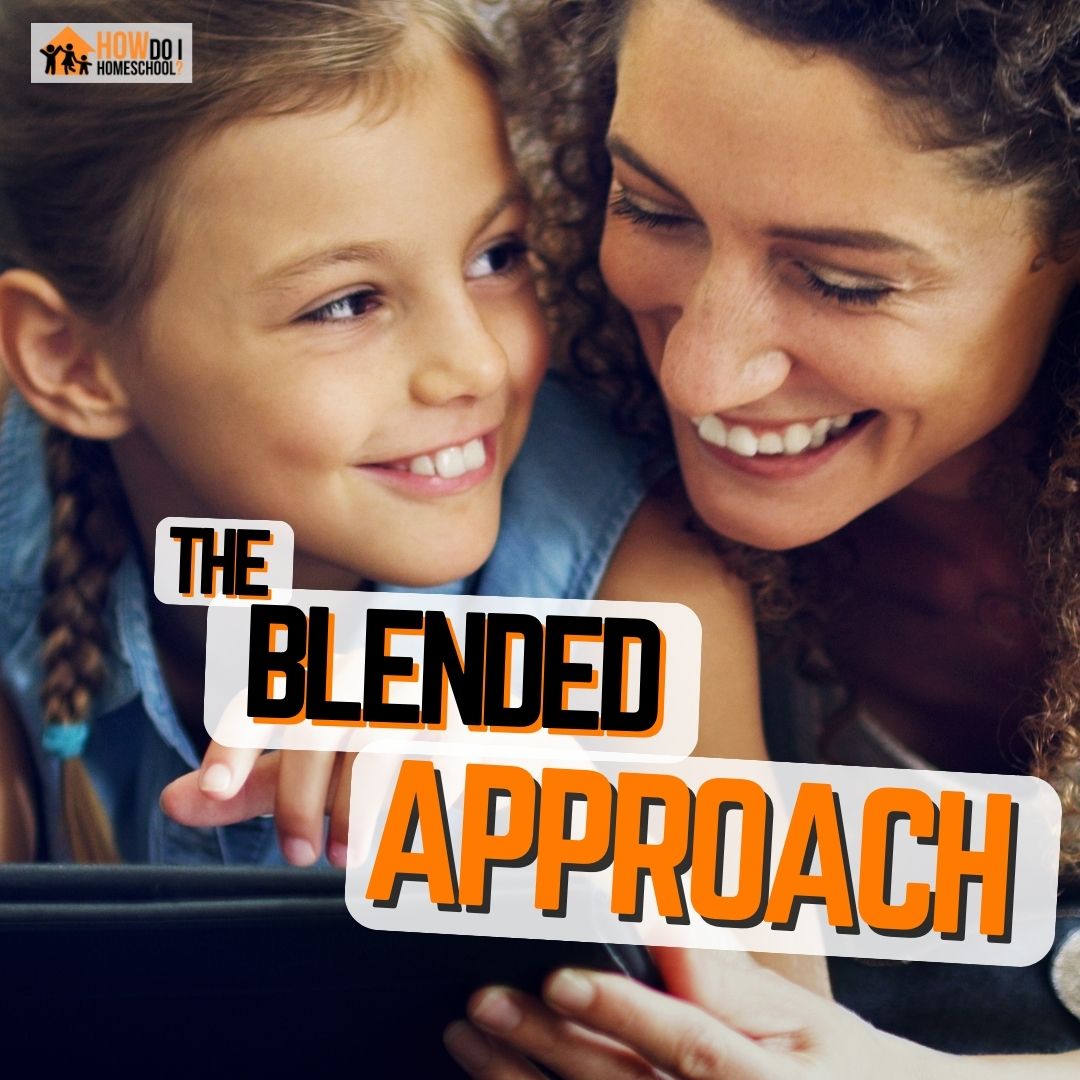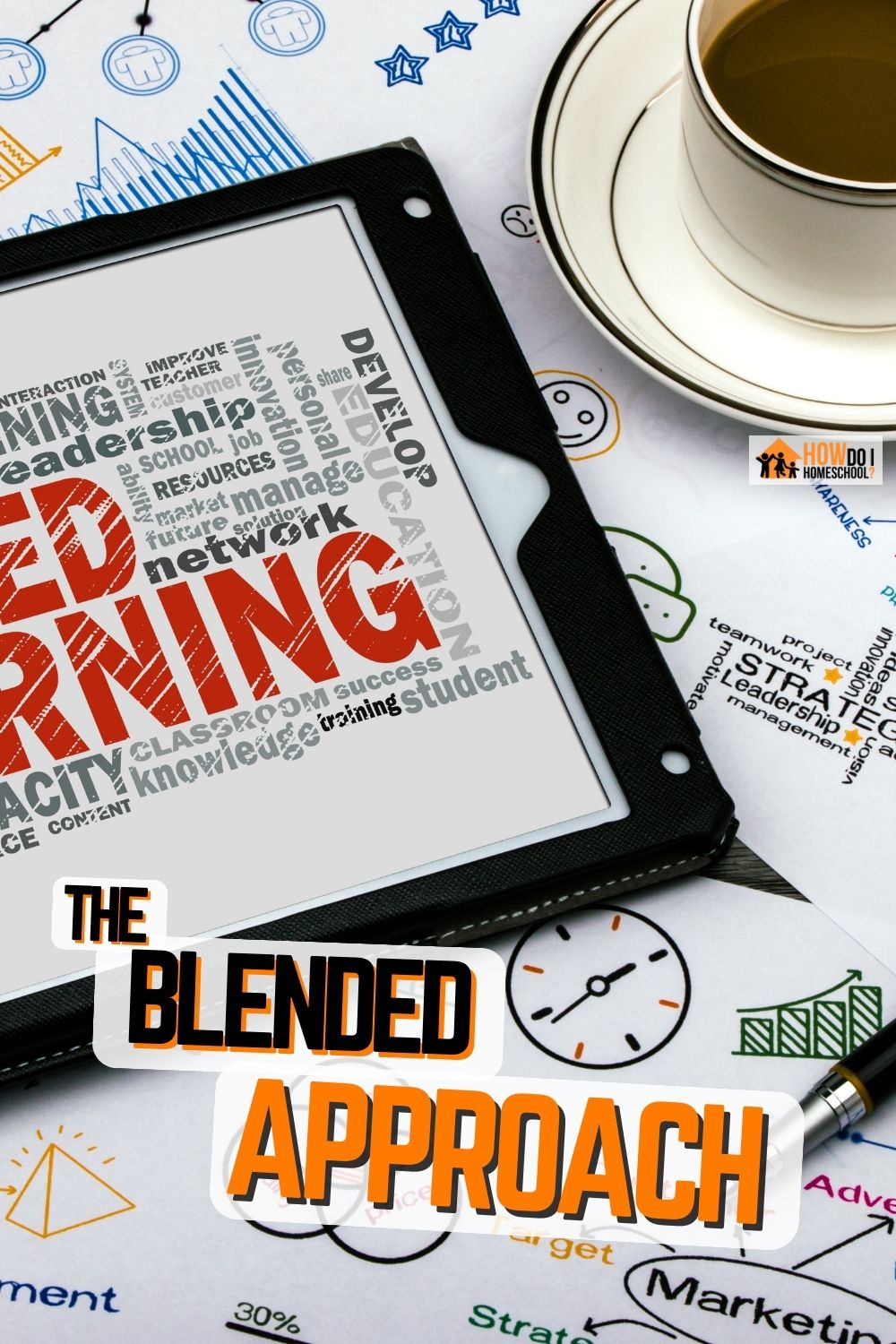Are you searching for an educational approach that combines the best of both worlds? Check out the blended learning approach. This method merges traditional face-to-face instruction with the power of online learning. By incorporating both in-person teaching and digital resources, the blended learning approach offers a unique and engaging homeschooling experience. Students can benefit from personalized learning, interactive activities, and the flexibility to progress at their own pace. Get ready to discover the perfect harmony between traditional teaching methods and the exciting possibilities of technology with the blended learning approach.

Affiliate links are used in this article.
What is a Blended Learning Approach?
Blended learning is an innovative educational approach that combines:
- traditional classroom instruction with
- online learning activities
The aim is to creat a dynamic and interactive learning experience for students.
This hybrid model aims to leverage the strengths of both face-to-face teaching and digital technologies, offering a well-rounded and flexible educational experience.
Benefits of Blended Learning
The blended learning approach, which many homeschool curriculum programs like BJU Press use, brings numerous benefits to students, making it an increasingly popular choice for educators and homeschooling families.
Firstly, it promotes personalized learning by allowing students to progress at their own pace and access a wealth of online resources tailored to their individual needs.
This flexibility empowers students to take ownership of their learning journey and enhances their engagement and motivation.
Additionally, blended learning provides opportunities for interactive and collaborative learning experiences.
Students can participate in online discussions, collaborate on group projects, and engage in virtual simulations or experiments.
This fosters critical thinking, problem-solving skills, and teamwork, preparing students for the demands of the modern world.
Blended Learning Examples
Blended learning is implemented in various educational settings, including homeschooling.
For example, a homeschooling family may utilize a Rotation model, where the child attends a cooperative learning group for certain subjects and completes online assignments for others.
This model combines the benefits of social interaction and independent learning.
In another example, a homeschooling parent may incorporate the Flex model, allowing their child to attend virtual classes or enroll in online courses for specific subjects while maintaining a traditional homeschooling approach for the remaining subjects. (Veritas Press do this and offer free consultations for interested homeschooling parents.)
This approach provides flexibility and access to specialized instruction.
Types of Blended Learning
The Blended Learning Approach encompasses various models, each with its own unique characteristics and combinations of in-person and online instruction.
One common model is the Rotation model, where students rotate between face-to-face classroom activities and online learning stations.
Another approach is the Flex model, where students can choose between attending physical classes or accessing online materials based on their preferences and needs.
Another popular model is the Self-Blend model, where students primarily learn in a traditional classroom setting but can supplement their learning with online resources.
Finally, there is the Online Lab model, where students engage in online coursework and come together for hands-on activities or experiments in a physical lab.
Let me expand on each of the methods more below.
The Rotation Model
In the Rotation model, students rotate between different learning stations or modalities, which may include face-to-face instruction, online activities, independent work, or group collaboration.
For instance, homeschool curricula like Veritas Press Virtual School (classical education) often utilize the Rotation model.
Students may attend live online classes, engage in online discussions, and complete interactive assignments while having access to physical textbooks and participating in offline projects or discussions.
Veritas Press offers free homeschool consultations here.
The Flex Model
The Flex model offers students the flexibility to choose the mode of instruction that best suits their needs.
They can switch between face-to-face classes, online courses, and self-paced learning.
BJU Press Homeschool exemplifies the Flex model by providing online lessons and resources, along with physical textbooks and materials.
Students can tailor their learning experience by selecting a mix of online and offline activities based on their preferences and learning styles.
Self-Blend Model
The Self-Blend Model is a versatile approach to blended learning that allows students to primarily learn in a traditional classroom setting while incorporating online resources to supplement their education.
This model offers flexibility and personalized learning options, catering to the unique needs and preferences of individual students.
An example of the self-blend model would be having children enrolled in Public School part-time (something I don’t recommend).
Online Lab Model
The Online Lab model is a unique type of blended learning that combines online coursework with hands-on lab activities or experiments.
This model is particularly beneficial for subjects that require practical, hands-on application of concepts, such as science, technology, engineering, and mathematics (STEM) disciplines.
Apologia has many ways to learn and encourages hands-only learning. They also have online video lessons so children can learn from online teachers if they want or from their textbooks.
What Theories Inform Blended Learning?
Several educational theories inform the design and implementation of blended learning.
One key theory is constructivism, which emphasizes the active construction of knowledge by learners through hands-on experiences and social interactions.
Blended learning incorporates elements of constructivism by providing opportunities for experiential learning and collaborative activities.
Another influential theory is the cognitive load theory, which focuses on optimizing the cognitive load on learners’ working memory.
Blended learning allows for integrating multimedia and interactive resources, reducing cognitive overload and enhancing information processing and retention.
Is Hybrid Learning the Same as Blended Learning?
Although the terms “hybrid learning” and “blended learning” are often used interchangeably, there are slight differences between the two.
Hybrid learning typically refers to a broader concept that includes any combination of in-person and online instruction.
In contrast, blended learning specifically involves integrating both modalities to enhance the learning experience.
In hybrid learning, the emphasis may be on complementing traditional classroom instruction with online activities or providing online options for students who cannot attend in-person classes.
Blended learning, on the other hand, aims to seamlessly integrate face-to-face and online components, leveraging the strengths of each to create a cohesive and comprehensive learning environment.
Is the Blended Learning Approach the Same as the Eclectic Homeschooling Method?
No, the blended learning approach is not the same as the eclectic homeschooling method.
While both approaches involve a combination of different educational resources and methods, they differ in their overall structure and focus.
The blended learning approach specifically refers to integrating traditional classroom instruction and online learning activities.
It combines face-to-face teaching with digital resources to create a comprehensive and interactive learning experience.
Blended learning aims to leverage the strengths of both modalities to enhance student engagement, personalization, and flexibility.
On the other hand, eclectic homeschooling is a broader approach that draws from a wide range of educational philosophies, methods, and resources.
Eclectic homeschooling families tailor their curriculum and teaching methods based on their child’s individual needs, interests, and learning styles.
This approach emphasizes flexibility and customization, allowing parents to choose the most effective resources and techniques for each subject or topic.
Homeschool Curriculum Using the Blended Learning Approach
Two notable Christian homeschooling curricula embrace the blended learning approach. They are:
- BJU Press Homeschool: BJU Press Homeschool offers a Christian-based blended learning curriculum. They provide online courses, digital resources, and traditional textbooks to create a well-rounded learning experience. Their materials are designed to align with biblical principles while incorporating interactive and multimedia components. (I use BJU Press with my own children.)
- Abeka Academy: Abeka Academy is a Christian homeschooling curriculum that incorporates blended learning. They offer a combination of traditional textbooks and multimedia resources, including video lessons and interactive activities. Abeka Academy provides a structured and comprehensive approach to education, integrating Christian values into their curriculum.
These Christian homeschooling curricula embrace the blended learning approach by combining digital resources with traditional teaching methods to provide a holistic and faith-based education for homeschooling families.
Subscribe to How to Homeschool (my Youtube channel!)
Have you caught the homeschooling bug?
Eager to delve deeper into the realm of unconventional education?
Well, my curious comrades, rejoice!
There are splendid avenues awaiting your exploration.
Firstly, hop on over to my YouTube channel, where a treasure trove of homeschooling wisdom awaits. From practical tips to delightful anecdotes, I unravel the mysteries of homeschooling with a touch of wit and wisdom.
Subscribe, hit that notification bell, and embark on an enlightening journey with me.
Enroll in the Homeschool Parenting Program
For those yearning for a comprehensive guide to homeschooling, look no further than my Homeschool Parenting Program.
This illustrious online course will equip you with the knowledge, strategies, and confidence to navigate the exhilarating world of homeschooling like a seasoned pro.
Enroll today and unlock the door to extraordinary educational possibilities.
Concluding Words
As we wrap up our journey through the world of blended learning, let’s take a moment to reflect on the magic it brings to the realm of homeschooling. With its fusion of face-to-face instruction and digital wonders, blended learning has the power to transform education into an adventure that ignites curiosity and sparks imagination. It’s like adding a pinch of pizzazz and a dash of innovation to your homeschooling recipe. So, dear homeschooling enthusiasts, embrace the blended learning approach, where tradition meets technology, and watch as your learning experience becomes a symphony of excitement and growth. Remember, with blended learning, the possibilities are as endless as your imagination. Get ready to embark on a learning journey where the blending of worlds opens doors to knowledge, empowerment, and a future filled with limitless potential. Let the blended learning revolution begin!
The post What is a Blended Learning Approach? 🫤💻 appeared first on How Do I Homeschool?.


